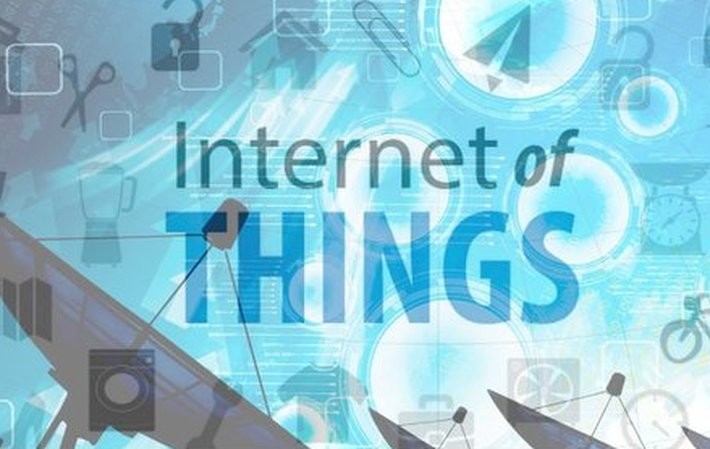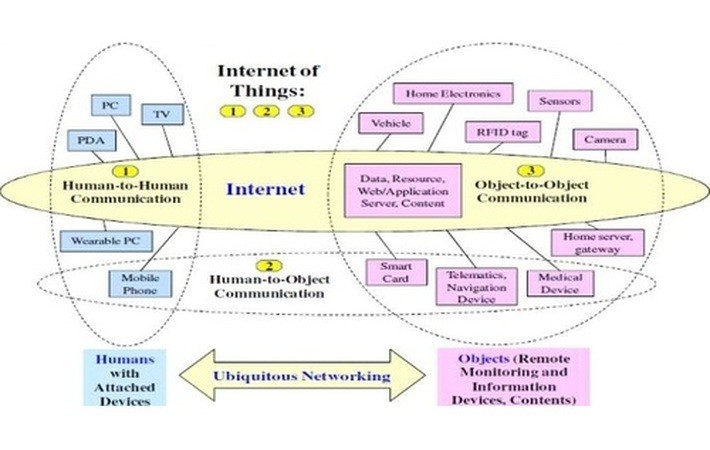
Published on 12/27/2016 | Use Cases
IoT/IoE is becoming widely popular and many ecosystem players are stepping into the game. Telecom companies/ISP has to play a key role. Please read Part A HERE before proceeding further - In Part A I covered aspects such as network infrastructure, OSS/BSS stack, support for protocols and real life case studies to highlight what role telecom companies can play with what they possess as internal assets.
Here I will cover telecom player’s external assets or customer strengths that make it convenient for telco's to adopt and sell IoT solutions thereby also helping them to move up the value chain. First let’s take a look at what is IoT ecosystem like and this image below (reference slide-share on how telecom companies realize IoT as a business case) depicts an important aspect of IOT ecosystem i.e. Internet or some form of connectivity.

Telecom companies thrive and breathe on 3 important assets - one is spectrum, two is prepaid sales and three is its distribution network to make the sale possible. You pick any top telecom of any country in the world - without a deep and wide distribution network and support system it is almost impossible to capture a large customer market share and also potentially revenue market share.
This same distribution network will come very handy to manage and distribute M2M SIM cards and hence M2M connectivity. Distribution can help to spread the reach and also can be leveraged to offer on ground support such as replacement, troubleshooting and remotely guided diagnostics. Point of presence of process, people and position in every nook and corner of the country will always help any large incumbent to leverage it for expanding the use cases of M2M. Even though the ARPU of M2M SIM is very low, I think the volume and economies of scale can help telco to find an alternative source of revenue and hence diversify.
Enterprise/Corporate Customer
Telecom companies not only serve B2C market but they provide lot of mobility and connectivity solutions such as broadband, leased line, PBX, long distance calling plans, IBS (in building solutions), network coverage enhancement tools and apps to the B2B and B2G market there by covering both enterprises (large and small) and government businesses. This foot in the door of Enterprise and Government Businesses is very important tool kit to address the need around IOT/M2M solutions.
Smart Cities across the globe have the basic need of being digitally advanced and connected. All government services, public utilities, citizen help desk, surveillance cameras, smart street poles; pollution monitoring systems, smart highways, and similar use cases needs a strong, wide and ubiquitous connectivity backbone. Who other than telco's have the capability to offer this form of connectivity?
Enterprise solutions such as smart appliances, shop-floor automation, energy consumption monitoring, automated meter reading, connected automobiles, usage based insurance, smart farming, asset tracking, VTS, etc. all rely on connectivity on the move and the only option is radio spectrum based 2G/3G/4G connectivity. Telecom companies have strong relationship with enterprise customer as part of selling connectivity solutions and their enterprise sales and marketing team can leverage the same to get a foot in the door to also sell M2M connectivity and there by improve the stickiness.
It is true that ARPU on machine based SIM card is not very high and very low compared to voice/data ARPU but if the volume is large it can result in considerable extra revenue from the same customer. If the solution is designed and supported well then it can improve the stickiness of the large and medium size customers. Like today telco’s use payments solutions, WiFi, and other value added services – I think IOT/M2M solutions can be thought of the same at least in the initial run
Individual Consumer Reach
One of the USP of any telecom company (specially the large ones) is having a reach to the end consumer. IOT is not only in B2B or B2B2C market but also in the direct to consumer products such as wearable, smart home solutions, home gateways and routers, smart appliances and also value added services. Normally telecom companies also have license to sell broadband in home and also cable TV (DTH) services,
For example Airtel has 1.9 million homes in India, China Mobile and Vodafone similar holds a very large share in their respective home territories. If you exclude retail industry and consumer goods industry than telecom companies has the largest reach to consumer and it is an important strength (I mentioned about distribution network in part A) along with expertise to sell on ground that be built upon to diversify.
Moving Up & Across Value Chain
Telecom market is becoming hyper competitive with the margins reducing on voice and pure data business because of competition. In emerging markets the situation is tough as the ARPU (average revenue per user) is already low and with opening up of telecom policies, free market situations, FDI and outside competition – I feel it becomes important for telecom players to start diversifying their revenue sources. Humans are limited and hence the potential to grab their revenue share so why not look towards machines right now so that you’re ready when IOT/M2M market becomes really big by 2020.
From offering a dumb pipe to adding value to customer’s life is always priority for any telecom player; services like mobile money, hello tunes, free WiFi hotspots, small recharge packs, enterprise support desk, tie up mobile phone vendors, online and app based solutions and customer support all are built with the mind set to improve stickiness and also to offer convenience. But none of these really add to revenue bucket directly barring a few.
IOT/M2M holds potential to create new revenue streams but yes not in the short term though. In the short term I think telecom players should stay abreast about this market and also make sure they don’t miss the bus in the long run by just ignoring this area.
Conclusion
With all the strengths such as network, connectivity, customer reach, brand, understanding of the market, distribution points, technology stack, capability to R&D on new protocols and technologies, cash flow and ability to absorb some risk and the most important supporting digitization of the consumer and adding value to its customers life – I feel IOT/M2M is the vertical that telecom players should definitely give a shot at.
I am not sure if I have covered all parameters on these 2 parts so I may write another part (C) if you readers can highlights the gaps here.
#iot; #m2m; #telecom; #smart cities; #enterprise; #B2C; #B2B
This article was originally posted on LinkedIn.